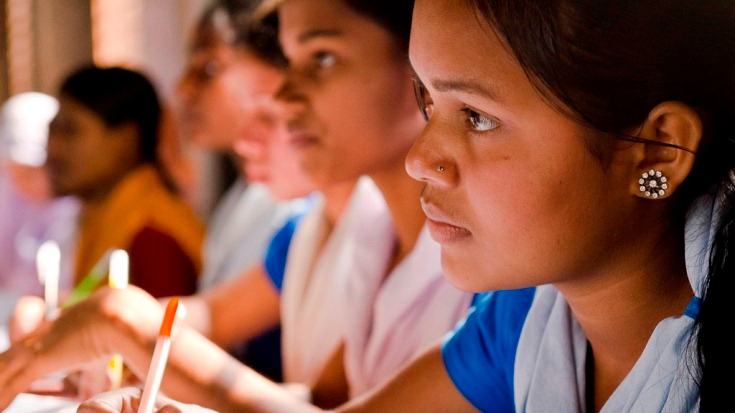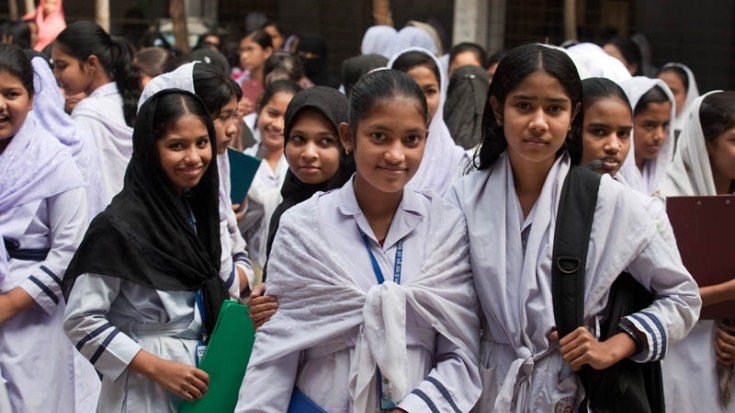Overview
Thanks to a series of measures taken over the last couple of decades more children than ever before, especially girls, are now continuing their education at the secondary level in Bangladesh.
However, it still remains a challenge for the children from low-income families to have access to good quality education. The Secondary Education Quality and Access Enhancement Project (SEQAEP), implemented since 2008, aims to improve the quality of secondary education and to increase access and equity among poor boys and girls, including those living in remote areas.
Challenge
Prior to 2008, the primary school completion rate was 50%, and fewer of these children moved onto secondary education. Only one in five children entering Grade 6 managed to complete Grade 10. Income played a crucial part in the education of a child as gross enrolment rate for the richest 50% of children was 75% but enrolment for the poorest 50% was only 30%.
Simultaneously, while there has been a significant enrolment growth for poor girls during recent years supported by a range of female stipend programs, enrolment levels for poor boys have remained stagnant. Moreover, due to a lack of systematic learning assessments at the primary and secondary levels, the quality of teaching has been difficult to assess.
Approach
To address these challenges, the government of Bangladesh launched SEQAEP in 2008, with the support of the World Bank. SEQAEP provides proxy means tested stipends and tuition to disadvantaged girls and boys as well as incentives to students, teachers and schools in 125 upazilas so that they can perform better. Students eligible for the stipend receive from $15 to $40 a year, depending on their grades, and benefits are conditional on students maintaining 75% average attendance, achieving a passing grade in final examinations, and remaining unmarried until they complete Grade 10.
An initiative has been taken through the Bishwa Sahitya Kendra, a reputed literary and cultural education institute of the country, to improve students’ reading habits, side by side with measures to provide water and sanitation facilities in schools and strengthen their management and accountability systems. All SEQAEP schools have parents-teachers associations (PTAs). Teachers are being trained in English and Mathematics, institutions are now offering additional classes to improve English and Math skills of their students, and financial rewards are also being given to those teachers who achieve pass targets of over 70% of the class and to institutions that consistently increase the number of students appearing in and passing the Secondary School Certificate (SSC) examination. The introduction of internationally recognized assessments is expected to both allow a quantitative analysis of these measures and enhance their impact.
Results in Numbers
- An increase in the share of poor children in total secondary enrolment to 39% in 2013, up from 30% in 2008.
- 2.3 million students benefit from SEQAEP, 54% of them girls in 6,700 secondary schools.
- 20% increase in secondary school enrolment due to stipends, especially among poor children.
- 46% of students graduating from secondary school, up from 30%.
- 270,000 students benefitted from the incentives awards.
- 107,000 additional classes conducted.
- 940,000 students benefitted from the reading habit development program.



